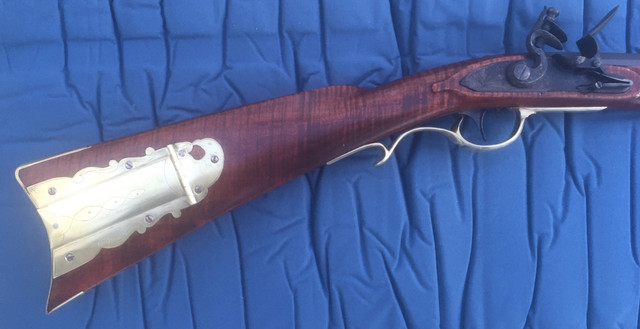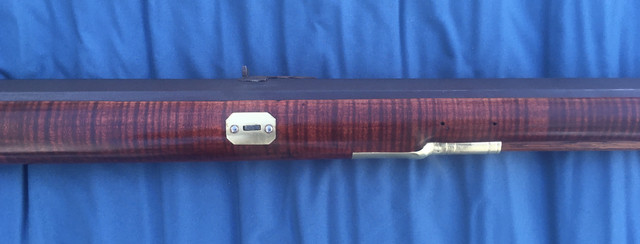- Joined
- Sep 20, 2010
- Messages
- 1,208
- Reaction score
- 1,273
Thank you for the history Dave. Even an old dog can learn much by watching you or Rich.

What years was the Deringer rifle produced?
Deringer was one of the earliest suppliers of trade RIFLES to Native Americans and for the western trade. Phil Meek is the better student but as I recall Deringer was making trade rifles as early as 1820. This one is 1820-1840.
There was an Indian burial that was excavated near Ann Arbor Michigan many years ago that contained the remains of a Deringer rifle. Probably came from one of the forts near Detroit.










I should have said "the only other Deringer trade rifle build I've seen made was by Jack Brooks (long ago)".The only other Deringer trade rifle I've seen was made by Jack Brooks (long ago). He shows it on his website - https://www.jsbrookslongrifles.com/apps/photos/album?albumid=2331762
Too bad more aren't made, but parts are scarcer than honest politicians.
















I can't stop looking at this rifle you did such a great job I hope you can talk the wife into selling it to me it fits my persona really good out here in the Rocky's I believe it's the nicest rifle I have ever seenAs you can see above, I’ve been working on and off on a Deringer trade rifle based mostly on one in the cool book “For Trade and Treaty”. I bought an inletted barrel , .54 tapered, 42” long, in a nice curly blank. I think it’s a Charley Burton barrel. The blank was bandsawed to profile for a Deringer trade rifle so there was not a lot of wiggle room.
I fabricated the patchbox and buttplate, had Mike Brooks cast me a guard from a model I carved in maple, and I made assorted other small parts like trigger and plate, thimbles, keys, nosecap, escutcheons, sideplate, and rear sight. The lock is an R.E Davis contract rifle lock that I reworked, making a new sear and sear spring. Works great now. I case hardened it.
After studying a few Deringer rifles including one in hand I wanted a deep reddish color. I stained the stock with ferric nitrate followed with a red LMF stain, diluted in alcohol.
The coolest feature is the running deer inlay on the cheekpiece. I sent photos and a digital file to Tom Curran (Acer) and he made a die and pressed this in thin brass, reinforced with solder on the backside. This inlay is 25% larger than the original, which is what I wanted. Comments and critiques are welcome.















Enter your email address to join: